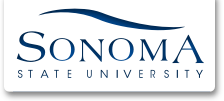Seismic upgrades to the West Approach of the San Francisco Bay Bridge required an archaeological sensitivity study of 6 city blocks. Delve into the history and archaeology of this San Francisco neighborhood in this two-volume report. Volume II covers chapters 7-11
CEQA
Seismic upgrades to the West Approach of the San Francisco Bay Bridge required an archaeological sensitivity study of 6 city blocks. Delve into the history and archaeology of this San Francisco neighborhood in this two-volume report. Volume I covers chapters 1-6.
This report details excavations conducted on the site of the former Golden Eagle Hotel in Sacramento during the summer of 1979.
Saloon keeper, music teacher, stableman, blacksmith, candy maker. These were just a few of the occupations of the people who lived on Tehama Street in San Francisco nearly 150 years ago.
Caltrans contracted with the Anthropological Studies Center at Sonoma State University to prepare archaeological research designs for mining sites, work camps, and town sites.
Native Americans, Basque cattle ranchers, and Portuguese farmers were among the groups that occupied this portion of southeastern Contra Costa County, California.
In November of 2015, Julia Costello and Judith Marvin of Foothill Resources, and Gerrit Fenenga, CAL FIRE Senior State Archaeologist, identified over two dozen archaeological sites along roads within areas burned by the recent Butte Fire.
ASC archaeologists tested and excavated lots on a Stockton city block in 2000.
Thomas Cook and his wife escaped slavery by taking the Underground Railroad to Canada prior to the Civil War, before eventually settling in Sacramento in the early 1870s until at least 1901.
To achieve compliance with the California Environmental Quality Act (CEQA) throughout the SF-80 Bayshore Project, ASC archaeologists monitored I-80 footing excavation at selected bents and directed the mechanical excavation of soil in sensitive areas.





































